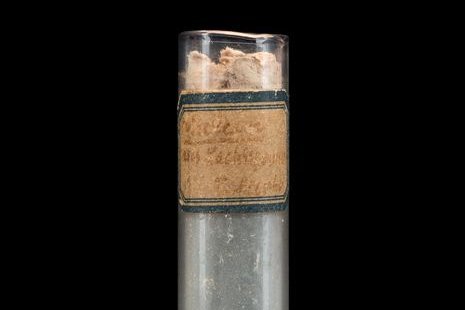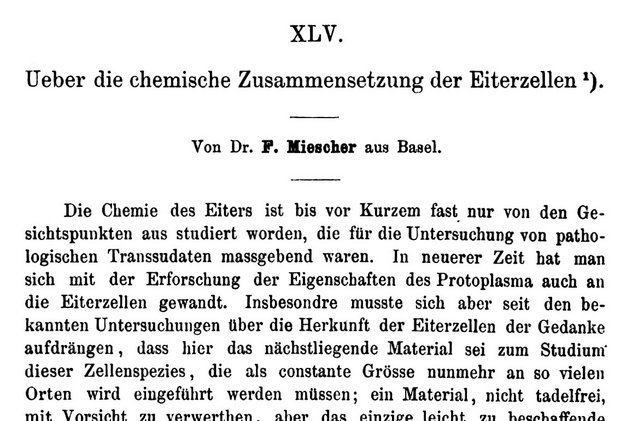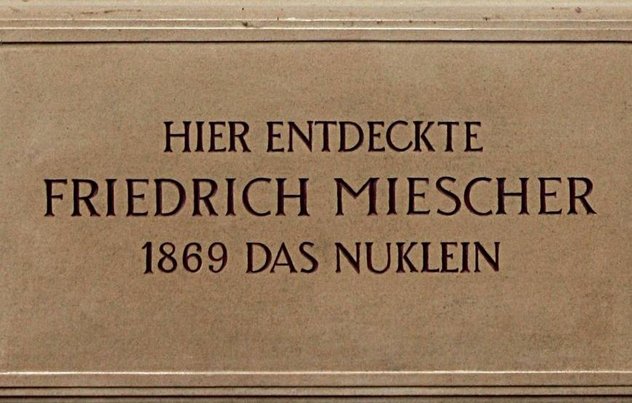The Discovery of Nucleic Acid
Friedrich Miescher Researches in the Castle Laboratory
With the plan to research the chemistry of individual, simple cells, Friedrich Miescher dedicated himself to the leucocytes, the white blood cells, starting in autumn 1868 in the castle laboratory. In order to obtain leucocytes, he chose a less appetizing, but very productive source: He collected used bandages in the Tübingen hospital, so as to wash out the white blood cells contained in the puss.
At the beginning of 1869, following extensive examinations, he came across a completely new substance. Miescher named the substance “nucleic” (pronunciation: nu-cle-ic) – after the Latin word for core, nucleus. In order to examine the nucleus substance more thoroughly, Miescher applied the digestion enzyme pepsin which he won out of pig stomachs. With the help of the enzyme, the protein of the puss cells could be decomposed completely so that the only thing left over was pure nucleic.
Miescher carried out elemental analyses with the isolated substance and could characterize the nucleic as a previously unknown cell substance with a high phosphorus content. He could only speculate about the meaning of nucleic. Today we know that he didn’t discover anything less than the substance in which our genetic information is coded: the DNA. To date, DNA carries the term “nucleic” in its name, for DNA or German DNS stands for “deoxyribonucleic acid”.
An original preparation with isolated DNA has been obtained from Miescher’s hand which is presented in the permanent exhibition in the castle laboratory Tübingen. It carries the inscription “nucleic from salmon sperm / F. Miescher” and was likely extracted around 1871 when Miescher continued his examinations with Rhine salmon in Basel. The publication of his work did not take place until 1871 in the fourth volume of Felix Hoppe-Seyler’s “Medical-Chemical Examinations” because Hoppe-Seyler was skeptical at first and proceeded to test Miescher’s experiments thoroughly.






